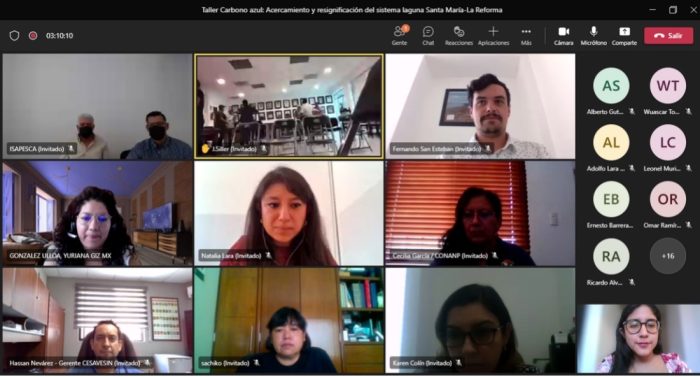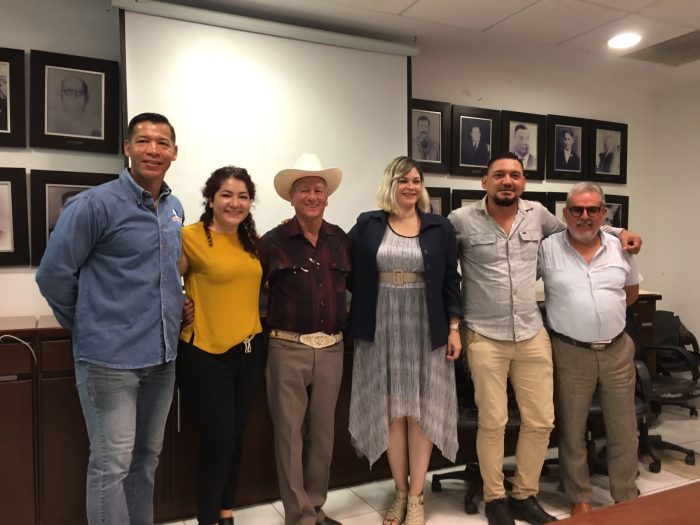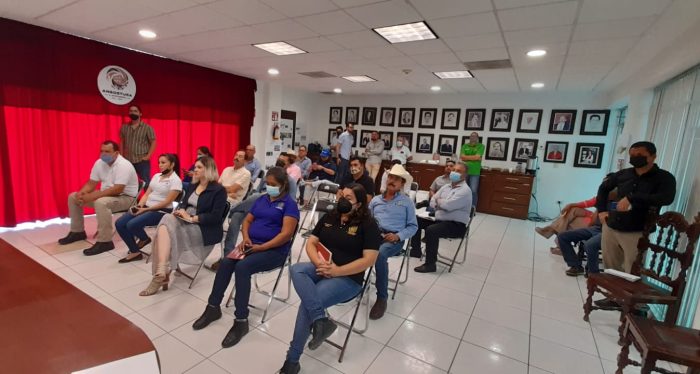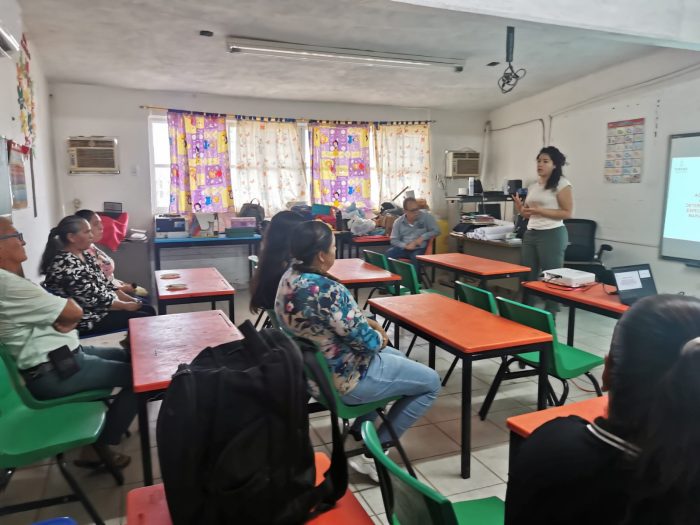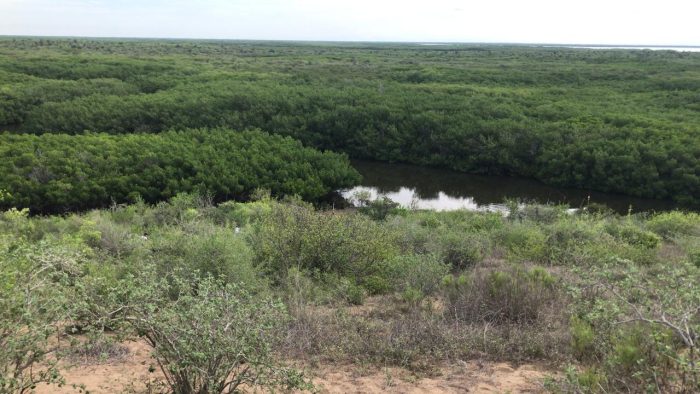Mangroves, salt marshes, and seagrasses make up blue carbon ecosystems, named for their ability to capture and store carbon. They are extremely important because they reduce the risks and negative impacts of climate change, protect coastal areas from storms and hurricanes, in addition to contributing to the well-being of communities. Mexico is the fourth country in the world with the largest extension of mangroves (CONANP, 2017) so it is crucial to protect these ecosystems and reduce the rates of degradation and loss.
In this sense, the Secretariat of Well-being and Sustainable Development of Sinaloa (SEBIDES) and the Deutsche Gesellschaft für Internationale Zusammenarbeit (GIZ) GmbH (German Cooperation for Sustainable Development), through the Mexican-German Climate Change Alliance, together with The College of Environmental Engineers of Mexico (CINAM), organized the virtual presentation of the results of the project “Carbon reservoir and vulnerability of the mangrove swamp of the Santa María Lagoon System – La Reforma, in the municipality of Angostura, Sinaloa“. The purpose of the event was to share the lessons learned that could be of interest for the development of future projects in the other coastal states of the country.
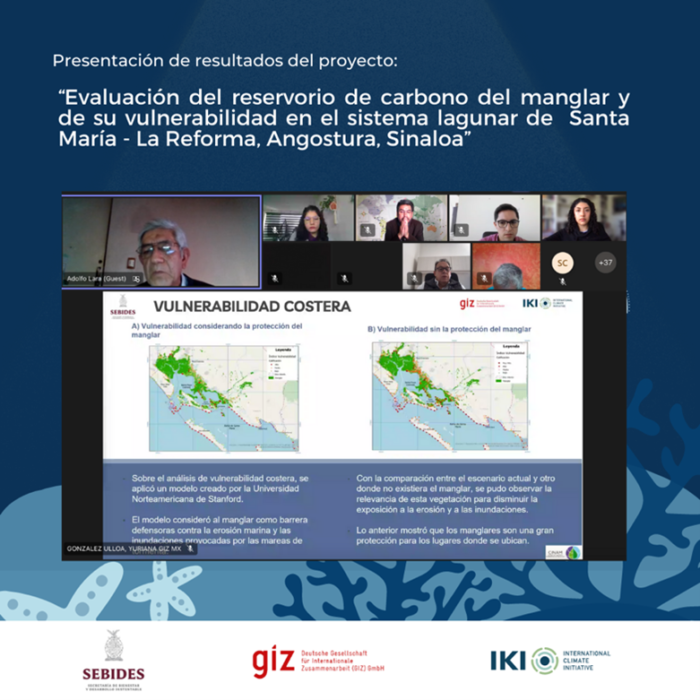
The session began with the words of Ms. Yamel Rubio Rocha, Undersecretary of SEBIDES, and Mr. Álvaro Luna, Principal Advisor of the Mexican-German Climate Change Alliance of GIZ Mexico, who highlighted the importance of promoting multi-sector work around blue carbon for the conservation of biodiversity, as well as mitigation and adaptation to change climate.
Subsequently, Engineer Adolfo Lara from CINAM, presented the particularities of the project, which was carried out through a participatory process with federal, state and municipal government institutions, state higher education institutions, civil and fishermen associations, as well as the citizens of the municipality of La Angostura. It was composed of four axes:
- The evaluation of the mangrove carbon reservoir of the lagoon system.
- The determination of the vulnerability of the carbon reservoir against hydrometeorological phenomena and environmental deterioration due to human activities.
- The proposal of actions for the conservation of the carbon reservoir and sustainable use of natural resources.
- The transfer of the knowledge obtained from the project to the inhabitants of the region and the federal entities of the country with similar characteristics.
Among the main results, he highlighted the great capacity of the mangrove to store carbon and the need to protect this ecosystem due to its importance in reducing marine erosion and flooding caused by storm surges.
The information repository on the project available to the general public was presented, which stores all the documents and information relevant to the study. Check it here.
To close the session, Dr. Jorge Siller from SEBIDES, Mtra. Yuriana González from GIZ Mexico and Eng. Alberto Cruzado from CINAM, emphasized the importance of determining the dimensions of the carbon reservoir and its vulnerability as a first step for the design of strategies for its conservation, the reduction of carbon emissions and adaptation to the climate change.
This initiative showed the relevance of promoting projects aimed at the protection and conservation of mangroves in the country’s states, as well as establishing multi-stakeholder and multi-sector alliances to strengthen local climate action.
To learn more about the work process, we invite you to read the article “The mangroves of Angostura, Sinaloa and their role in climate action” and download the final report of this study.
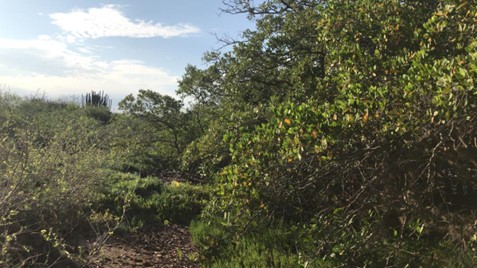
Mangrove swamp of the Laguna Santa María System – La Reforma, Angostura, Sinaloa © CINAM / GIZ Mexico, 2022

